The Epidemic > The Big Five > Tommy John Twist > Point the Ball at Second Base
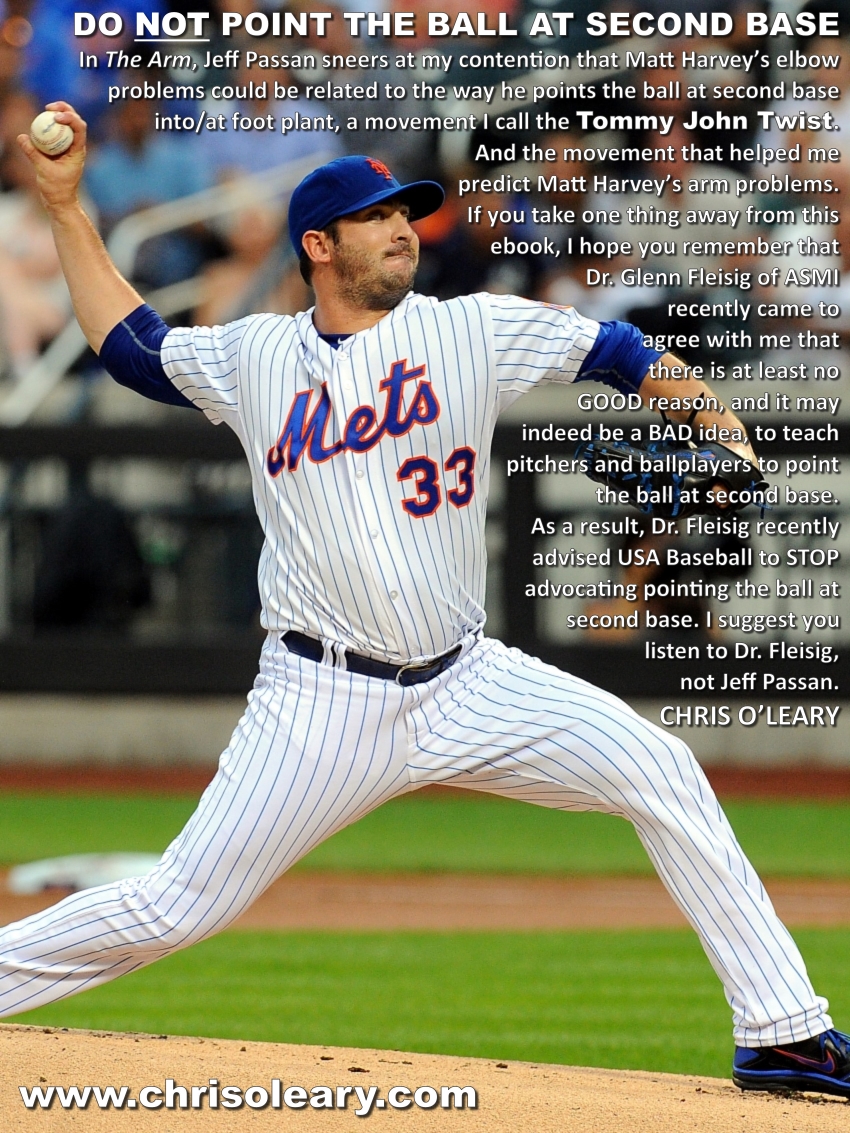 Of all the cues I believe are problematic, none worries me -- and infuriates me -- more than telling throwers and pitchers to point the ball at second base.
Of all the cues I believe are problematic, none worries me -- and infuriates me -- more than telling throwers and pitchers to point the ball at second base.
Point the ball at second base is an unnatural and dangerous cue because it tends to lead to elbow problems and then shoulder problems by creating a Timing problem. It likely started out as a defensible cue to prevent excessive reverse-rotation of the shoulders. However, it has taken on a life of its own and, like a cancer, keeps gaining momentum and ruining arms in the process, especially as pitchers are taught to point the ball at second base later and later on in the delivery.
Even ASMI still shows pitchers pointing the ball at second base. I am certain that they did NOT do so in order to drum up business. I believe the problem is ASMI has been, and continues to be, too accepting of the conventional wisdom about pitching mechanics and too deferential towards the pitching mechanics industry.
Like the Mayo Clinic and their advocacy of the Power Position, ASMI needs to be more objective and skeptical about the conventional wisdom about pitching mechanics.
I discuss this cue at length in a number of pieces...
...but let me give you a quick overview here.
UPDATE 2016.10.19: GREAT NEWS! Dr. Glenn Fleisig of ASMI agrees with my concerns about the potentially problematic nature of teaching throwers and pitchers to point the ball at second base. As a result, he has advised USA Baseball to update their piece on PlayBall.org that previously advocated pointed the ball at second base at the power position.
USA Baseball has updated their recommendations and no longer advocates pointing the ball at second base.
Point the Ball at Second Base
Point the Ball at Second Base is just what it sounds like; a thrower or pitcher, at foot plant, should be pointing the ball at the second base bag.
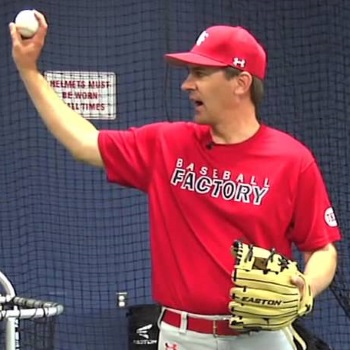
Point the Ball at Second Base
The Problem
The problem with telling throwers and pitchers to Point the Ball at Second Base is it often correlates with elbow, and in the worst case shoulder, injuries in throwers and pitchers if it is held into foot plant.
For instance, and as I discuss at length in my analysis of Matt Harvey's pitching mechanics, the way he pointed the ball at second base at foot plant alerted me to the likely existence of a Timing problem and enabled me to predict his Tommy John Surgery months in advance.
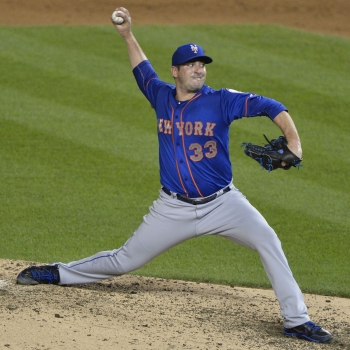
Matt Harvey
The existence of Pointing the Ball at Second Base has enabled me to predict the injuries of a number of other pitchers, including Jose Fernandez. I discuss what I saw and why it's a problem in my analysis of Jose Fernandez's pitching mechanics.
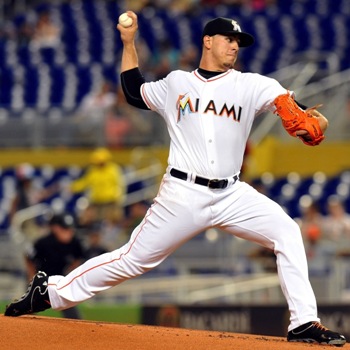
Jose Fernandez
Other pitchers whose injuries I predicted include...

Walker Buehler
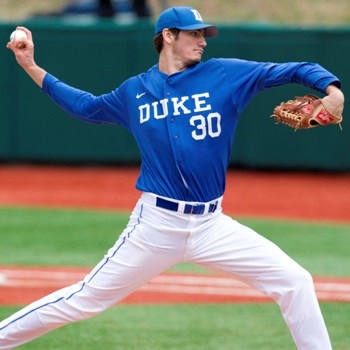
Michael Matuella
Why it's Bad
It's not clear whether Pointing the Ball at Second Base is a problem in and of itself, but it can cause problems by hurting a pitcher's Timing and keep them from getting to the Ready Position by foot plant.
That is exactly what you see in this (post-TJS) clip of Matt Harvey.
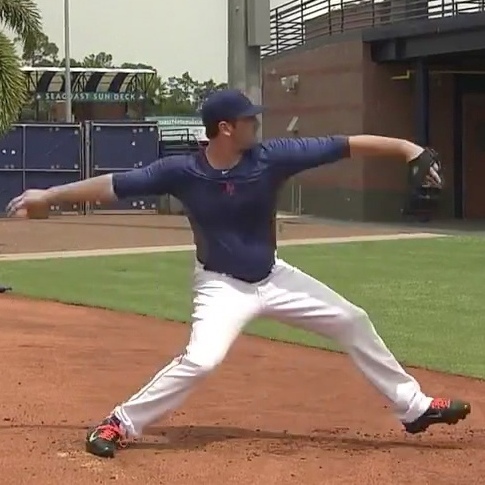
Matt Harvey Post-TJS Frame 1
I admittedly don't know what Matt Harvey has been taught. However, we can guess, given how he moves and how that corresponds to common pitching mechanics cues.

Matt Harvey Post-TJS Frame 2
I would classify what you see in Frame 1 and Frame 2 as the Power T. The Power T, which I believe is based on an incomplete understanding of Roy Halladay's arm action, isn't necessarily bad.
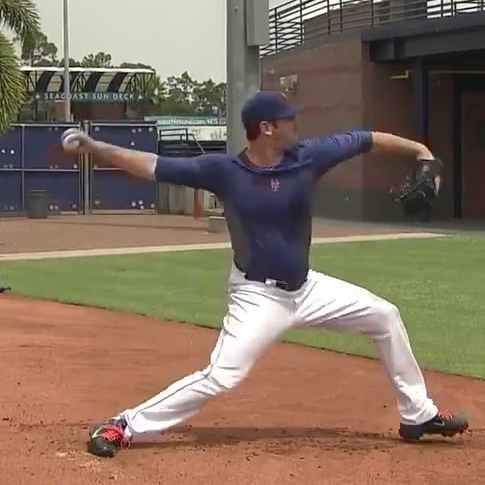
Matt Harvey Post-TJS Frame 3
The thing that determines whether the Power T is bad or not is whether or not it's held into foot plant and whether it's accompanied by Pointing the Ball at Second Base. That is because, by holding the Power T into foot plant and pointing the ball at second base, throwers and pitchers are ensuring that their arm will be late, and the science behind The Epidemic shows that the impact on a pitcher's Timing is what really matters when it comes to arm actions like the Power T or the Inverted W.
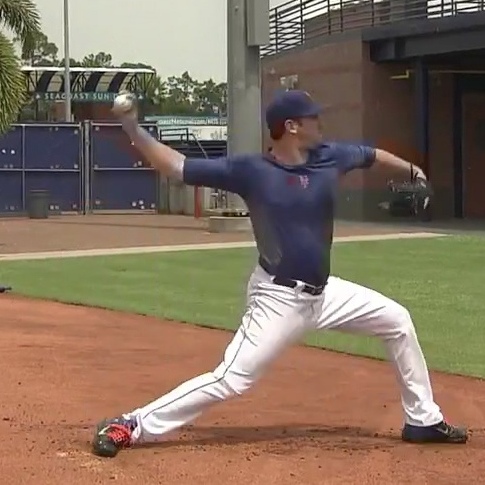
Matt Harvey Post-TJS Frame 4
As you can see in Frame 4, Matt Harvey holds the Power T and Points the Ball at Second Base into foot plant. I would argue that is why he experienced his initial elbow injury and why Matt Harvey remains at risk for more elbow and shoulder problems.
ASMI isn't Helping
As i discuss in my analysis of ASMI's pitching mechanics model, ASMI advocates Pointing the Ball at Second Base.
I'm certain ASMI isn't deliberately trying to hurt ballplayers' arms.
However, I believe that, in unthinkingly going along with what everybody teaches, and likely focusing solely on velocity as a measure of mechanical quality, ASMI is inadvertently contributing to the pitcher injury and Tommy John surgery epidemic.
In my experience, just because a pitcher throws hard, that doesn't mean they have good mechanics; mechanics that will enable them to be both dominant and durable.

Matt Harvey and Tom Seaver
Both Tom Seaver and Matt Harvey threw hard, but Seaver lasted while Harvey can't stay healthy. In my opinion, that's not because Seaver was a genetic freak; in truth, Seaver lasted due to his far superior Timing.
The Science Behind my Concerns
I discuss the science behind this at greater length in my piece on Premature Pronation. However, let me give you an overview of what I believe and why.
1. The load on the UCL exceeds the limits of the UCL. That means that something else is helping to carry the load.
2. The something else that is helping to carry the load is the FPM.
3. In order to help carry the load, those muscles have to be active during the period of peak stress, which is around 90 degrees.